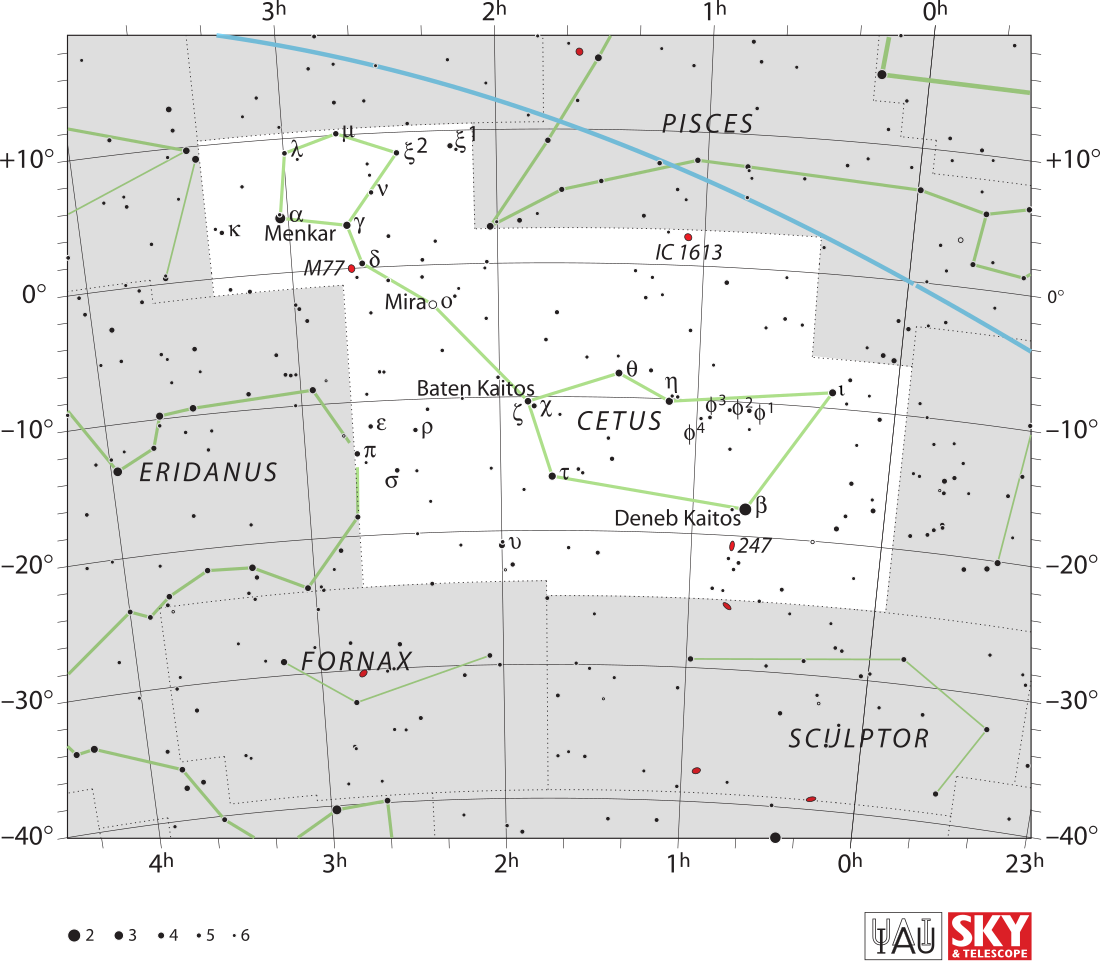Top Qs
Timeline
Chat
Perspective
Delta Ceti
Star in the constellation Cetus From Wikipedia, the free encyclopedia
Remove ads
Delta Ceti, Latinized from δ Ceti, is a single,[7] blue-white hued star in the equatorial constellation of Cetus. The star's apparent visual magnitude of +4.06[2] means it is near to the cusp of the faintest third of the stars that are visible the ideally-placed naked eye. It is 0.3238° north of the celestial equator compared to the celestial north pole's 90°. The star is positioned about 0.74° WNW of the spiral galaxy M77, but which at apparent magnitude 9.6 needs magnification to be made out and has an apparent size of only 0.1° by 0.12°.
Based upon an annual parallax shift of 5.02 mas as seen from Earth,[1] it is around 650 light years from the Sun. Motion relative to our system's trajectory includes a highly parting vector: with a net radial velocity of about +13 km/s.[4] It moves minutely across the celestial sphere – yet just over four times more in right ascension than in declination.

This is a Beta Cephei variable[3] with a stellar classification of B2 IV.[3] It varies in brightness with a period of 0.16114 days.[6] Unlike most stars of its type, it does not display multiple periods of luminosity variation or multiple variations of its spectral line profiles.[9] The star is about 7−18[6] million years and has a low projected rotational velocity of around 7 km/s,[3] suggesting it is either rotating slowly or is being viewed from nearly pole on.[6] It has 8.4[3] times the mass of the Sun and 4.6[3] times the Sun's radius. The star is radiating around 4,000[3] times the Sun's luminosity from its photosphere at an effective temperature of roughly 21,900 K[3]
Remove ads
Name
This star, along with α Cet (Menkar), λ Cet (Menkar), γ Cet (Kaffaljidhma), μ Cet, ξ1 Cet and ξ2 Cet were Al Kaff al Jidhmah, "the Part of a Hand".[10]
According to the catalogue of stars in the Technical Memorandum 33-507 - A Reduced Star Catalog Containing 537 Named Stars, Al Kaff al Jidhmah were the title for five stars :γ Cet as Kaffaljidhma, ξ1 Cet as Al Kaff al Jidhmah I, ξ2 Cet as Al Kaff al Jidhmah II, δ Cet as Al Kaff al Jidhmah III and μ Cet as Al Kaff al Jidhmah IV (exclude α Cet and λ Cet.)[11]
In Chinese, 天囷 (Tiān Qūn), meaning Circular Celestial Granary, refers to an asterism consisting of δ Ceti, α Ceti, κ1 Ceti, λ Ceti, μ Ceti, ξ1 Ceti, ξ2 Ceti, ν Ceti, γ Ceti, 75 Ceti, 70 Ceti, 63 Ceti and 66 Ceti. Consequently, the Chinese name for δ Ceti itself is 天囷九 (Tiān Qūn jiǔ, English: the Ninth Star of Circular Celestial Granary.)[12]
Remove ads
References
External links
Wikiwand - on
Seamless Wikipedia browsing. On steroids.
Remove ads

